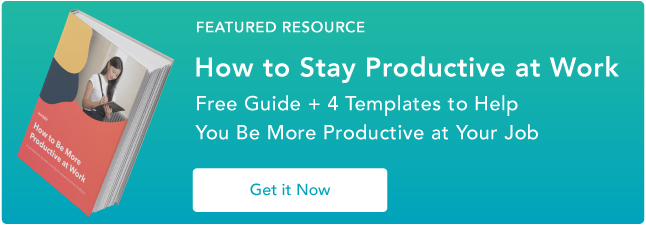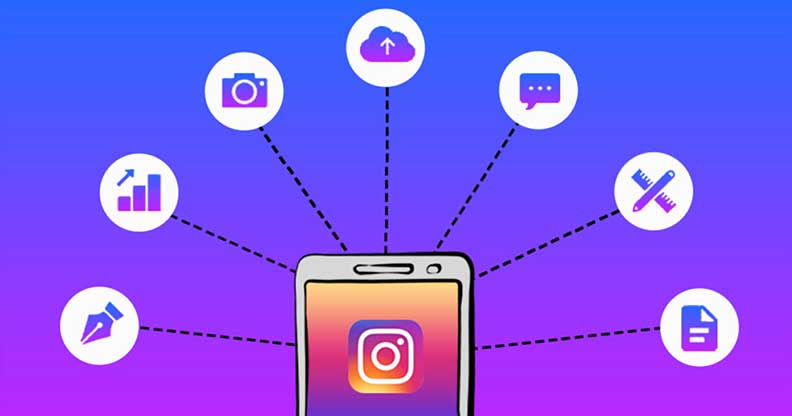5 Secrets to Achieving Work-Life Balance, According to HubSpot Employees
- February 28, 2024
- Knowledge Base
- 0 Comments

When I started working from home, I thought work-life balance would come naturally. After all, I have no commute and don‘t have to plan what I wear each workday. And when it’s all over, I can close my laptop and turn on the TV.
Now, I realize how difficult it is to achieve a work-life balance, regardless of whether you work remotely or in an office.
If you work from home, you technically live at work — which can skew the balance. And if you work at an office, your commute to and from work can cut into your personal time.
Fortunately, there are ways to balance work and life, whether remote or in-person.
Let’s explore five secrets to achieving a work-life balance, according to HubSpot employees. But first, what even is work-life balance?
What is work-life balance?
Work-life balance describes how your work intersects with your personal life, such as family, leisure, or health. Ideally, you want a balance in which you’re not sacrificing your personal life to keep up with work or vice versa.
Before working at HubSpot, I was a journalist for various TV stations.
Any journalist will tell you it’s easy for the profession to take over your life, leaving very little time for hobbies, rest, or personal relationships — since breaking news never takes a day off.
When I put too much focus on the work, my relationships with friends and family deteriorated, negatively impacting my mental health. On the other hand, when my personal life bled into my professional life, my work suffered.
So, how do you strike the right balance? I spoke to a few colleagues at HubSpot and drew from my personal experiences to provide insight. So, let’s dive into different ways to maintain a healthy work-life balance.
5 Tips for Work-Life Balance
1. Set boundaries.
Boundaries are crucial to balancing your personal and professional lives, regardless of your passion for your job.
“Boundary setting is one of the single greatest powers I’ve been able to uphold in my professional working career,” says Linda Huard, senior technical recruiter at HubSpot. “And, as a part of the boundary setting, I do not install work apps on my personal device.”
That means Slack, work email, and LinkedIn are not on her phone.
“It’s just too tempting to check during non-working hours,” she says. “I tell anyone I work with that when I’m on and in front of my laptop, I am giving 110%, but when I’m off-line, I’m completely off. This means evenings, weekends, holidays, and vacations remain completely mine.”
Huard says to set these boundaries early and hold to them.
Setting boundaries is definitely something I still struggle with regarding work-life balance.
In fact, the night before writing this post, I logged into my work computer at about 9 p.m. and spent the rest of the evening contemplating work instead of unwinding before bed.
So, I can assure you from experience that keeping business apps off your phone or putting your work laptop away after you clock out is an effective way of maintaining balance.
At the very least, it could ensure a peaceful evening before you have to start the day all over again.
2. Practice self-care.
Speaking of peaceful evenings, do you know what I should have done instead of checking my work emails before bed? The answer is my nightly self-care routine: good food, light music, and a little reading before sleeping.
Practicing self-care is vital not only to work-life balance but also to overall mental clarity and well-being.
A national survey shows that 64% of Americans who practice self-care report experiencing enhanced self-confidence, and 67% saw increased productivity. Furthermore, 71% say they saw a boost in overall happiness.
“One thing that has been quite helpful to me [regarding work-life balance] is focusing on self-care,” says Olurotimi Moses, our corporate growth representative. “For me, that looks like meditation, music, candles, and bubble baths. When I can, I treat myself to a day at the spa.”
Rest will help you decompress from the day and recharge for the next.
3. Try co-working.
Co-working is especially helpful if you‘re like me and work from home. I live in a small studio, where I’m always near my TV, phone, books, or dishes that need washing.
With everything around and no manager or co-worker in sight, it’s tempting to distract myself.
So, I‘ll sometimes FaceTime a close friend I know who works from home, and we’ll co-work together. We know we’ll hold each other accountable and call each other out if we allow ourselves to stray from our tasks.
I find I get a lot more done that way.
“I work in silence on Zoom with my best friend for an hour every week,” says Principal Marketing Manager Julia Gueron. “She’s across the country. It’s a great way to stay in touch with her, and I feel more focused if someone else who is just as busy is around working.”
Gueron says, “Sometimes we end up chatting, but it’s important to do this with someone who I know I can be honest with and say: ‘Hey – I really need to work now.’”
4. Know your style.
Some people can wake up feeling ready to take on the day, so they dive straight into their most tedious task first thing in the morning.
On the other hand, I am more of a night owl — so I tend to be more productive later in the day or early afternoon.
As a result, I warm up my work day by managing simpler responsibilities, such as responding to emails, checking Slack for any important messages, or scheduling future meetings.
Once the coffee and breakfast kick in and I‘m more alert, I’m ready to dive into writing the fantastic blog post you’re used to reading from me. Perfection takes time, after all.
That’s my work style; it helps me get things done while setting realistic goals.
“I’ve been working remotely for 11 years and have found that you have to lean into your remote work style,” says HubSpot’s principal recruiter, Steph McDonald. “For me, I get to my desk at 9 a.m. and rarely take time away until I leave at 5 p.m.”
McDonald notes that everyone’s work style is different, and others may clock in and take microbreaks or go to work out during the day to refresh their energy.
“It’s okay to have different styles as long as your work is getting done,” she says.
5. Set expectations with friends and family.
When I was a journalist, I was living with my family.
I‘ll never forget the many times I’d get a call from my parents during the workday complaining about dishes that needed to be washed or asking if I could pick up my mom’s favorite fruit on the way home.
Though they meant no harm, the constant calls and texts were distracting and affected my productivity. So, I had to talk with my parents about respecting my work hours and saving these conversations for after I clock out.
My colleague, Marketing Manager Tristen Taylor, experienced similar issues when she started working from home.
“A new challenge I experienced when I began working from home was trying to make my family understand that I was, in fact, working from home,” she recalls.
She says, “At the time, I was living in the city near my family and would experience unannounced visits from them wanting to go out to eat or run an errand, and would be met with a pout when I’d reiterate that I can’t just get up and go wherever.”
Like me, Taylor also suggests setting boundaries and expectations with your family, friends, and colleagues.
“You can’t afford to get distracted by those living in your home or dropping by, so let them know your schedule is more rigid than they assume,” she says.
Taylor adds, “On the other side of the coin, let your manager know you have rigid starting and stopping times to ensure you aren’t overworking or taking on too much work beyond your cadence or job description.”
So, ensure everyone in your professional and personal have a clear understanding and expectations regarding your schedule.
Even if they mean well, you don‘t want your friends coming between you and your work, and you don’t want your coworkers giving you more tasks than you can handle.
Maintaining a work-life balance can be challenging, but it’s worth it if it means managing your overall well-being while still being productive and a crucial asset to your team.





